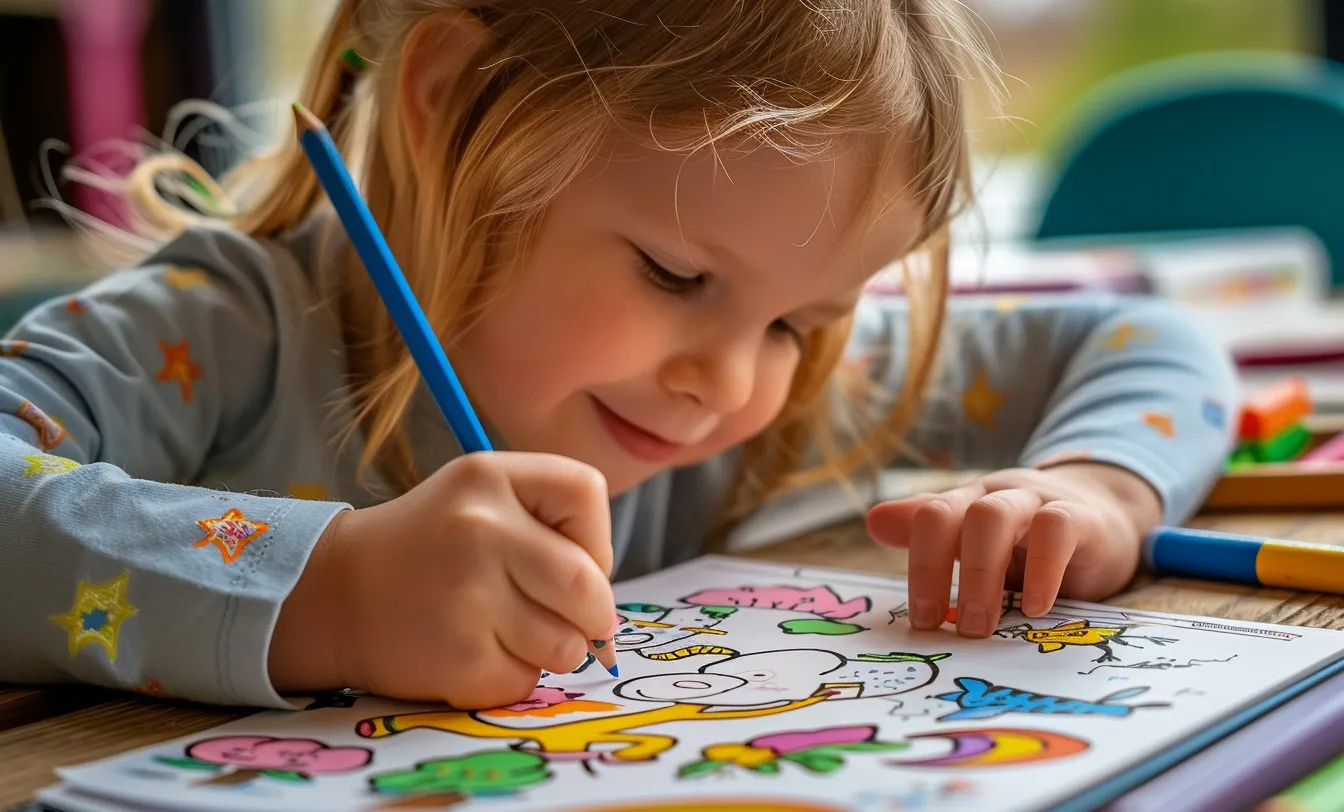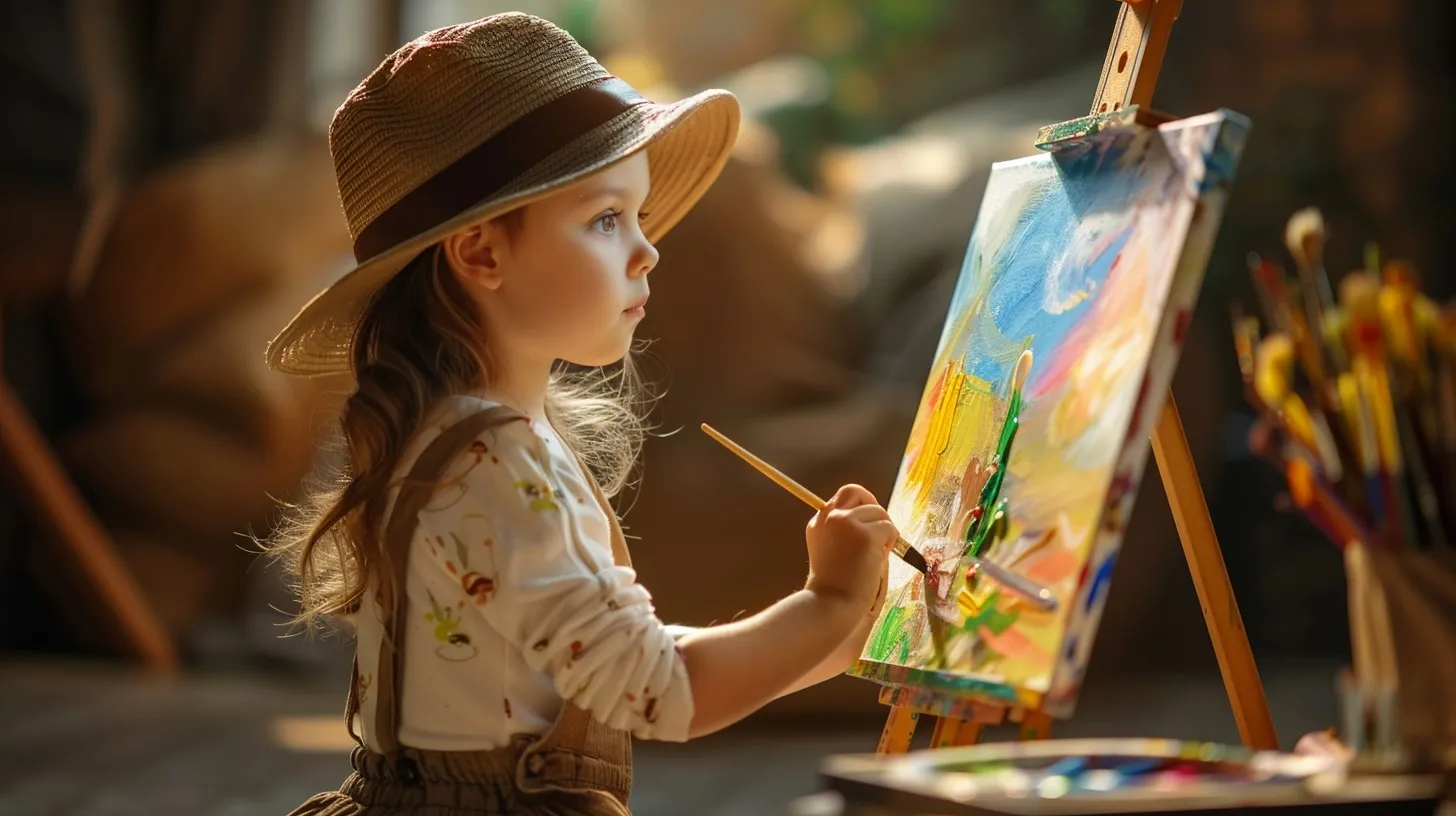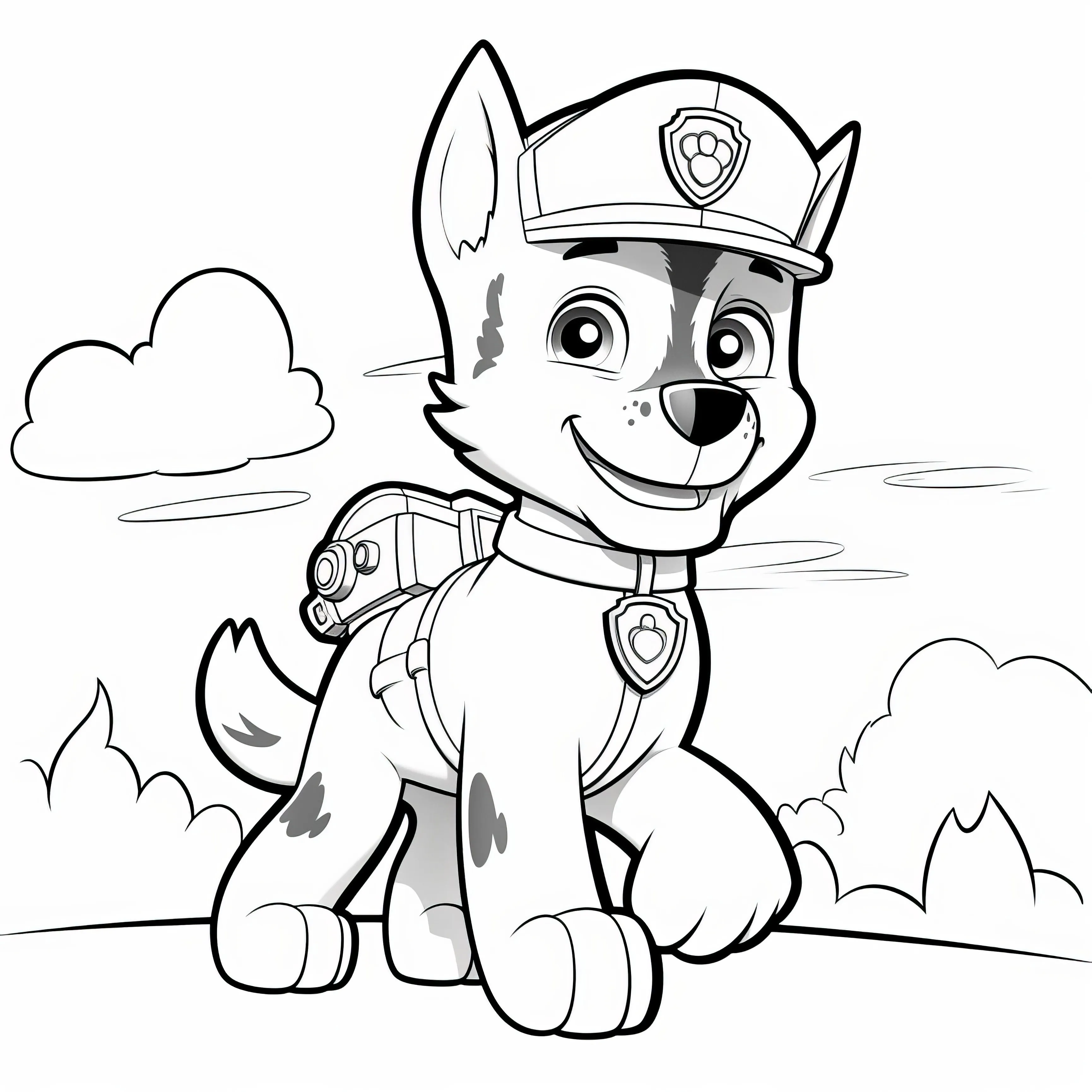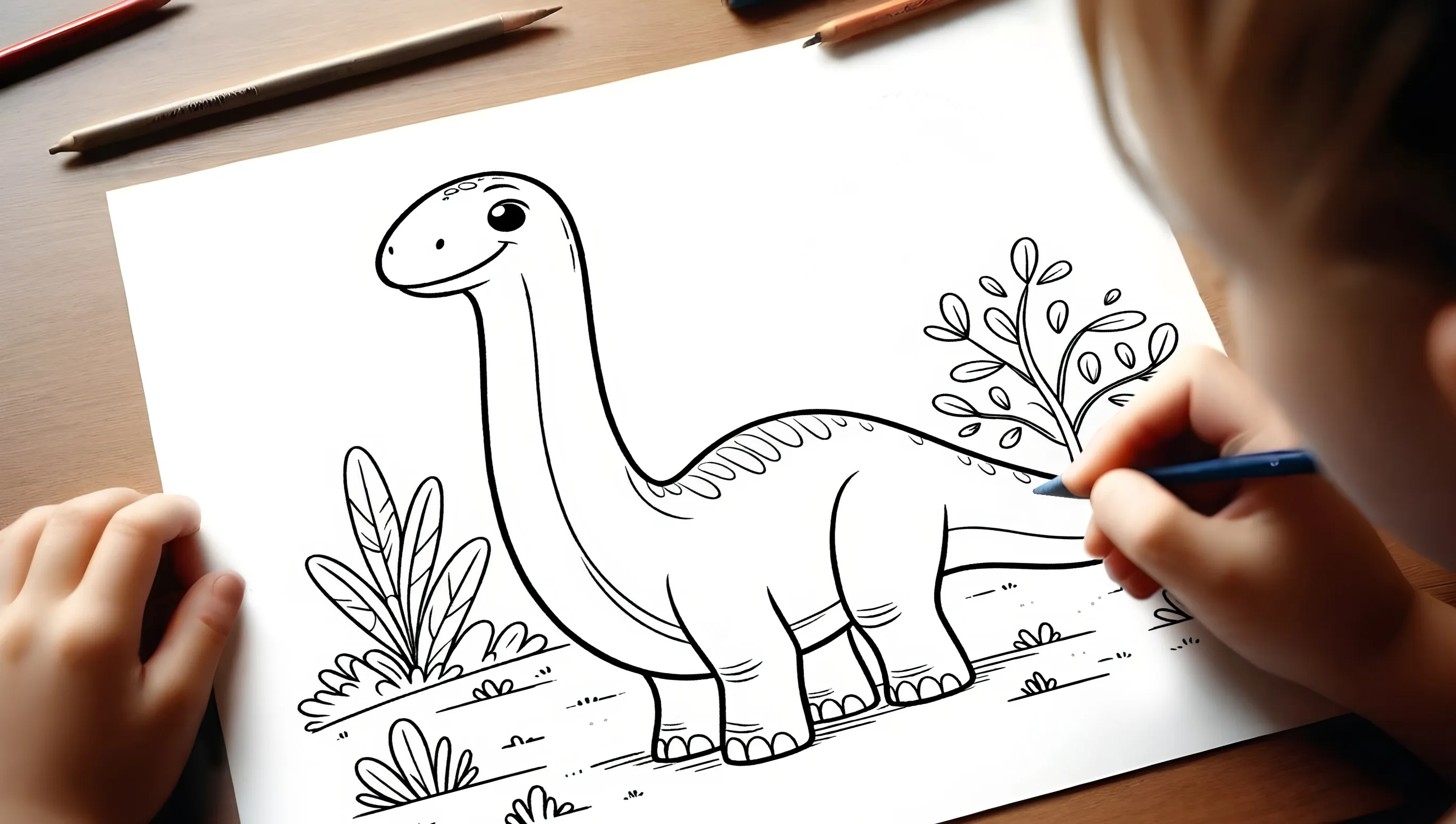We think that coloring in coloring books is a fun pastime that develops a child's fine motor skills. But coloring books for kids can do so much more! Coloring as a developmental activity for children plays a huge role in building many skills. And it's definitely a better alternative than trying to keep a child too busy with a smartphone or laptop. Find out more in our article here. We in our team are all parents. So this topic is a very personal one for us.
Table of contents
How do coloring books contribute to a child's development?
The most important purpose of coloring books and coloring pictures is undoubtedly to train children's hands. This involves developing fine motor skills, learning new skills, preparing for school and writing. When coloring, the child chooses colors, combines them with each other, experiments, shows taste, demonstrates artistic skills and expresses himself. This activity disciplines the child to a certain extent, teaches it to carry out monotonous work over a longer period of time, to finish the work, promotes diligence, accuracy and independence (because after coloring, all objects must be returned to their place and the workplace tidied up). Above all, it also encourages patience. A child is rewarded with a finished picture at the end. Are you familiar with Walter Mischel's marshmallow experiment on reward deferral? Then you know that children who have learned patience will be more successful later in life.
Coloring can also be a way to spend time together. Adults sometimes don't mind coloring and reminiscing about their childhood. And children love it when their parents participate in their games and activities.
With coloring books, you can learn colors, shapes, numbers and letters with your toddler. Coloring calms the nervous system and distracts from scary thoughts. It is a good way to distract the child's attention from problems or a stressful situation.

Start drawing in the coloring book
Before you start drawing with your child, it is important to show patience yourself. Yes, it can be difficult at first. The motor skills of children's hands are not yet sufficient to hold a brush or pencil securely. But this is exactly what you do with your child to gradually develop their skills and improve their coordination.
One of the first steps is to prepare the workspace. This is key in my opinion. I suggest painting with finger paints. Not only is this safe for your child, but they can experiment with colors without having to pick up a brush.
I recommend that you do this with your toddler on the floor. Paint and brush wash water can easily spill, especially if your child accidentally grabs it. Imagine how unpleasant it would be if the paint water spills all over the table or even the floor of the room. You know what I mean. If you work on the floor, you avoid such problems and can concentrate on the creative process with your baby without worrying too much.
Once your baby has learned to hold the brush, you can boldly start painting. It is best to start painting after the age of two.
Your child's first coloring book should contain two or at most three details and be quite large, because he or she will be learning with the brush. This could be a mushroom (stem, hat), a house (square and roof), an apple (the apple itself and a green leaf). It's best to place two glasses with different colors near your baby: he paints one with one color and the other with another. Of course, you should explain to your child how to do this and even demonstrate it. Don't expect your child to paint inside the outlines in the first few lessons. It usually takes a while before the little artist understands the meaning of what is happening and tries to get it right. Praise it anyway and patiently express your wishes. If the child doesn't want to paint, that's okay. Don't insist on it. Over time, the desire will come, as long as you unobtrusively offer him this activity for development and entertainment.
By the way: There are many interesting coloring books for the very little ones on the market. For example, watercolors that come to life under a wet brush and become colorful. Or reusable paints that can be washed out after painting and allow new pictures to be created again and again.
When the child is a little older and has mastered painting with a brush, you should offer them colored pencils and felt-tip pens to paint with. There is no clear recommendation as to which should come first. Of course, felt-tip pens are much easier and more interesting to paint with because they are much lighter and softer than colored pencils. But if you start with felt-tip pens, the child may give up on pencils altogether because they are so difficult to handle. In addition, drawing with colored pencils develops motor skills best and prepares the hand for writing. A child who masters the first challenges with colored pencils will tire less quickly in later lessons and develop better handwriting.
If your child is older than six and their motor skills are already well developed, it may be time to get a large easel and start drawing on an A3 sheet of paper. It is no secret that drawing is not only fun, but also encourages a child's creativity and self-expression.
When a child has the opportunity to work like a real artist on a large sheet of paper, it can give their creativity new possibilities and inspiration. They will feel like a little Pablo Picasso when they have such a large surface in front of them for creative experimentation. Grandparents will also be delighted with their own pictures. A great gift idea for the next visit!
When a child also sees that their drawings take up a whole sheet of paper, this can have a positive effect on their self-esteem. They begin to realize that their creativity is important and valuable and that their work deserves to be shown and appreciated.
It is important that the child is confident and not afraid to try new things. This is something that many adults often lack because they have simply forgotten how to do it. By supporting them in their creative endeavors and giving them the opportunity to work on a large easel, we help them develop self-confidence and the ability to express themselves creatively, which will be invaluable for the rest of their lives.
As they get older, the coloring books change too. The older they get, the more the girls' drawings will differ from the boys'.

What do boys and girls draw?
The drawings of boys and girls aged 4 to 6 can differ in style, preferences and themes.
In general, girls at this age prefer brighter colors and more detailed pictures. They often draw Blums, animals, princesses and fairy tale characters as well as scenes from their everyday lives. Girls' drawings can be more emotional and expressive and often reflect their feelings or fantasies.
Boys at this age are more likely to see pictures of cars, airplanes, animals, knights, superheroes and other objects associated with action and adventure. Their drawings can be more dynamic and abstract, with an emphasis on movement and battle. As my grandpa himself used to say, playing war is more fun for boys than mother-father-child games. Well, let's just accept it.
Ultimately, the preferences and drawing style depend on the child's individual interests and personality. The important thing is that the child decides for themselves what they want to draw. Support your child in their drawings and don't impose your ideas on them. Your job is to encourage their talents and not to impose your taste on them. Even if our children often look very similar to us on the outside, each of them is a personality with their own preferences and tastes.
Coloring books for older children differ not only in their "adult" themes, but also in their size and number of details. The young artists can now carefully sketch even the smallest element.
Coloring is such a fascinating activity that children of all ages love to engage in it. Beautiful coloring sets can be used to spark children's interest and encourage them: Felt-tip pens, paints, crayons. However, make sure that the child holds the pencil correctly from the outset and pay attention to their posture. And provide a suitable workspace.

A study on the influence of drawing on child development
There are many studies on the effects of drawing in childhood on children's development, conducted at different times and by different research groups. One example of such a study is "The Effects of Drawing on Child Development: A Review of the Evidence" by Benjamin Richardson and Margaret McCall, published in the journal "Art Therapy" in 2003.
This study provides an overview of the existing evidence for the effects of drawing on child development. The authors examined various aspects such as cognitive development, emotional expression, social interaction, etc. and found positive effects of drawing on each of these aspects.
- Cognitive development: Drawing promotes the development of children's cognitive skills. It stimulates imagination, creative thinking, attention and memory. Drawing also helps children to develop spatial thinking and the perception of shapes and colors.
- Emotional expression: Drawing gives children the opportunity to express their emotions and feelings. Through drawing, they can communicate their joys, fears, worries and fantasies. This helps children to develop emotional competence and self-expression.
- Social interaction: Drawing often takes place in group situations, e.g. in kindergartens or schools. This helps children to develop social skills such as cooperation, sharing materials and communicating with others.
- Improving motor skills: Drawing requires children to use their fine motor skills and motor coordination. Practicing drawing helps to improve children's motor skills, which in turn can have a positive impact on their graphomotor and writing skills.
These results underline the importance of drawing for the development of different aspects of the child's personality and confirm the importance of including the arts in the educational process to promote the holistic development of the child.
Coloring on the TutKit.com portal
In this article I have looked at some aspects of the impact of drawing on a child's development. Drawing and coloring coloring pages are important activities that should be integrated into a child's everyday life. These activities have a positive impact on a young child's development by encouraging creativity, cognitive skills, motor skills and emotional expression.
On our TutKit.com portal, we offer a wide range of downloadable coloring books that can be downloaded and printed. This is an easy and inexpensive way to introduce your child to the world of art and encourage their creative development. It's no big hassle for you. Click on your favorite children's coloring books below and download drawings for your child! You can get started with your child immediately after downloading.

